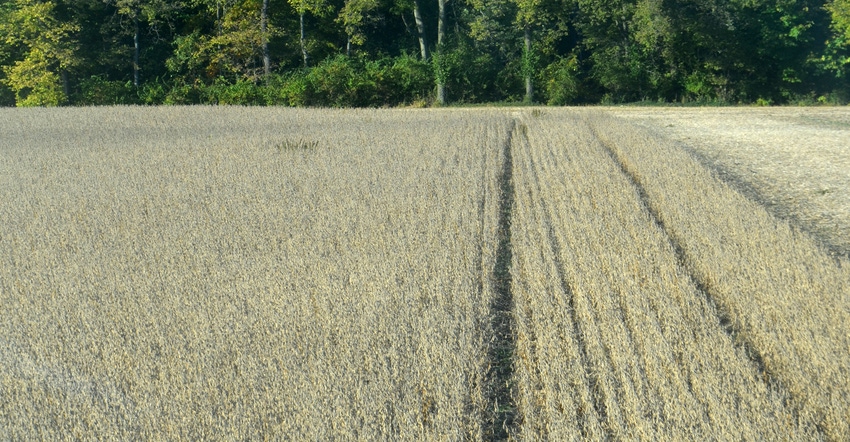September 1, 2020

Take a few minutes before you head to the combine, or even while you’re combining, to review your 2020 cropping program and plan for 2021. It could make next year run more smoothly while also making gains with healthy soils.
Here are six areas to evaluate around harvesttime:
1. Residue spreading. Is your crop residue spread evenly along the entire width of the header? Uneven or windrowed material means you either have bare spots or thick blankets. Bare or thin spots are more prone to erosion. These inconsistent conditions make planting more challenging.
Plus, uneven residue spreading can tie up nutrients and impact herbicide applications. If you’re planting cover crops, uneven spread can cause issues with emergence and establishment.
2. Soil compaction. How bad is soil compaction and how much does it cost your operation? What are the traffic patterns across your fields? Yield reductions can vary from a good year to a bad year. If possible, try not to drive over the entire field, but confine traffic to one area or wheel track. Reducing compaction during harvest equals less water-ponding and root-stunting issues next year.
Avoid the temptation to address soil compaction with more steel. Planting a groundbreaking cover crop mix, such as oats and daikon radish, can help alleviate compaction caused during harvest.
3. Fall tillage. Do you need it? What is the purpose, besides the fun of driving a tractor? While it’s not always possible to increase crop yields or prices, pay attention for opportunities to cut expenses, such as reducing trips across the field. Fewer trips reduce fuel, equipment and labor costs, along with lowering the potential of soil compaction. Less tillage also minimizes erosion and improves soil health.
4. Soil sampling. Have all fields been soil sampled within four years? After harvest is an ideal time to take soil samples. Fall sampling results give you more time to plan your nutrient application program for 2021. While fall and early winter are great times to address lime and potash needs, the goal should be to apply nitrogen and phosphorus as close to next year’s crop as possible to improve nutrient use efficiency and reduce losses.
5. Weed control. How was weed control this year? What weeds escaped? Identify “hot spots” and diagnose why those weeds were present. Proper identification is key. Pay attention to weed populations on field edges and in the field during harvest. Be sure to clean out the combine before heading to the next field, especially after fields with herbicide-resistant weeds or high weed populations.
Have you explored the potential of a high biomass cover crop, such as cereal rye, to include in your weed control management program?
6. Next year’s plans. Have you been thinking about switching to strip-till or no-till corn, adding a cover crop, or establishing a grassed waterway or filter strip, but you haven’t made the leap yet? Use combine time to plan, and talk to your local contacts and advisers later to develop a strategy. Successfully implementing conservation and building healthy soil on your farm takes time, commitment and planning. The earlier you start, the more effective your strategies will be.
Bailey is the state conservation agronomist with the Natural Resources Conservation Service in Indiana. He writes on behalf of the Indiana Conservation Partnership.
You May Also Like




